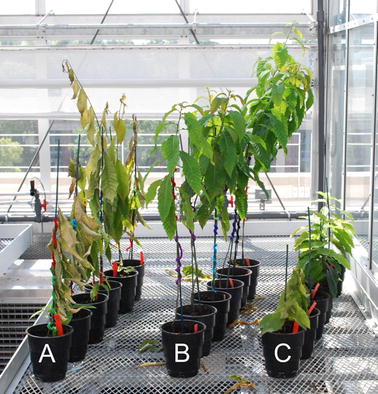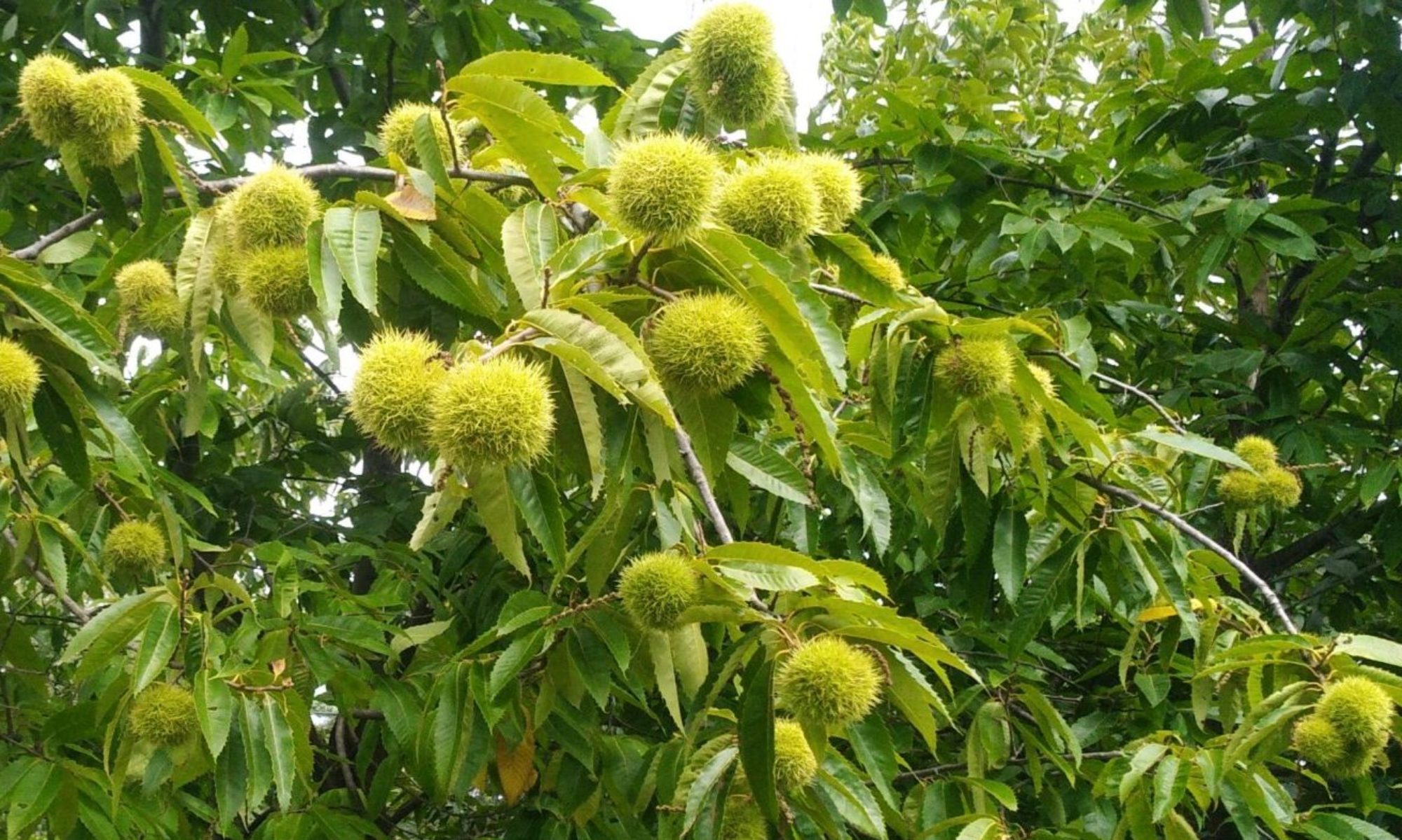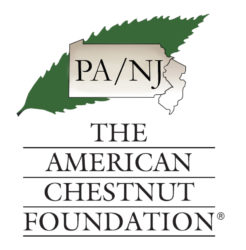A plan to diversify a transgenic blight‐tolerant American chestnut population using citizen science.
By Jared W. Westbrook, Jason A. Holliday, Andrew E. Newhouse, and William A. Powell — First published: 20 July 2019
This article summarizes the rationale for TACF and ESF’s plans to outcross transgenic trees to wild trees to diversify the blight-tolerant population for restoration. We are currently in the second generation of outcrossing to wild trees. We plan to outcross the second generation trees over three additional generations to minimize inbreeding in the population. We plan to use DNA markers to select against the transgenic founder trees genome and to maximize genome inheritance from wild trees. We want to ensure
that the population has enough genetic diversity to adapt to broad geographical range and a changing climate.
TACF will need help of chapter members to find and propagate 1,000 wild type American chestnut from across the species range. These wild type trees can be used both for diversifying transgenic populations and for creating new backcross lines. The general protocol for collecting scion from wild trees is:
1. Document the location of the tree and take a picture using treeSnap or the tree locator form on
dentataBase
2. Mark the tree with a forestry crayon or with a tag so that you can identify it in the winter
3. Revisit the tree in the winter and collect 5-10 pieces of scion wood. Scionwood should be last years
growth, about pencil width diameter, disease free, with dormant buds.
4. Ship scion wood to Meadowview or Penn State for propagation if you do not plan to propagate yourself.
 Rescue of American chestnut with extraspecific genes following its destruction by a naturalized pathogen Steiner, K.C., Westbrook, J.W., Hebard, F.V. et al. New Forests (2017) 48: 317. doi:10.1007/s11056-016-9561-5
Rescue of American chestnut with extraspecific genes following its destruction by a naturalized pathogen Steiner, K.C., Westbrook, J.W., Hebard, F.V. et al. New Forests (2017) 48: 317. doi:10.1007/s11056-016-9561-5
There are several efforts underway to restore the American chestnut involving traditional breeding methods, simple conservation strategies, methods that would reduce the virulence of the blight fungus, as well as modern gene-transformation techniques. The American Chestnut Foundation (TACF) is involved with each method, but focuses primarily on classical breeding techniques.
Some methods being explored toward American chestnut restoration are:
1. Traditional breeding with hybridization;
2. American chestnut germplasm conservation and breeding; and
3. Biotechnology
AT THE INTERFACE OF CLASSICAL BREEDING AND BIOTECHNOLOGY
Backcross breeding and transgenic/cisgenic technology are two potentially complementary strategies to introduce genetic resistance to blight into American chestnut.
While the broadest goal of TACF is to restore the American chestnut species, the organization focuses on two major objectives: (1) introducing the genetic material responsible for the blight resistance of the Chinese tree into the American chestnut; and (2) preserving the genetic heritage of the American chestnut species by planting and grafting native germplasm before it disappears.
Each chestnut species – of which there are about seven – varies with regard to blight-resistance. Blighted North American chestnut species usually die, while blighted Asiatic chestnuts typically suffer only cosmetic damage. With that in mind, Chinese and Japanese chestnuts offer a potential solution to the American tree’s susceptibility to chestnut blight through hybridization[/vc_column_text][/vc_column][/vc_row]

